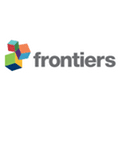
MOLECULAR AND CELLULAR NEUROSCIENCE
Scope & Guideline
Pioneering Research in Molecular Mechanisms of the Brain
Introduction
Aims and Scopes
- Molecular Mechanisms in Neurodegeneration:
The journal emphasizes studies that explore the molecular pathways involved in neurodegenerative diseases such as Alzheimer's, Parkinson's, and Amyotrophic Lateral Sclerosis (ALS). Research in this area often employs genetic, biochemical, and cellular techniques to dissect the underlying mechanisms. - Neuroinflammation and Immune Responses:
A significant focus is placed on the role of neuroinflammation in various neurological disorders. Articles often investigate the activation of glial cells and the immunological aspects of neurodegeneration, exploring how inflammatory processes contribute to disease progression. - Neuroplasticity and Synaptic Dynamics:
Research on synaptic transmission, plasticity, and the molecular underpinnings of neuronal connectivity is a core area. The journal includes studies on synaptic scaffolding proteins, neurotransmitter systems, and activity-dependent changes in synaptic strength. - Stem Cell and Regenerative Neuroscience:
The journal publishes works on the differentiation and reprogramming of neural stem cells and the potential for regenerative therapies in neurological diseases. This includes studies on induced pluripotent stem cells (iPSCs) and their applications in modeling diseases. - Genetic and Epigenetic Influences:
The exploration of genetic and epigenetic factors affecting neuronal function and behavior is a growing area of interest. The journal features research that links genetic variations to neurological conditions and investigates epigenetic modifications in response to environmental stimuli.
Trending and Emerging
- Neuroinflammation and Its Role in Disease:
Recent publications have placed a strong emphasis on the role of neuroinflammation in a variety of neurological conditions. This trend underscores the importance of understanding how inflammatory processes contribute to neurodegeneration and neural repair. - Use of Induced Pluripotent Stem Cells (iPSCs):
There is a growing trend towards utilizing iPSCs for modeling neurological diseases and exploring cellular mechanisms. This approach allows for the investigation of patient-specific cellular responses and the potential for personalized therapies. - Mitochondrial Dynamics and Neurodegeneration:
Research focusing on mitochondrial function and dynamics has gained traction, particularly in the context of neurodegenerative diseases. Studies are increasingly addressing how mitochondrial health impacts neuronal survival and function. - Molecular Signaling Pathways in Neuronal Health:
An emerging focus on specific signaling pathways, such as those involving neurotrophic factors and their receptors, is evident. This includes exploring how these pathways can be manipulated for therapeutic gain in various neurodegenerative and psychiatric disorders. - Sex Differences in Neuroscience:
There is an increasing recognition of the importance of sex differences in neurological research. Recent studies are highlighting how biological sex influences the susceptibility to neurological diseases and the response to therapies, paving the way for more nuanced approaches in treatment.
Declining or Waning
- Traditional Pharmacological Approaches:
Research centered on traditional pharmacological interventions for neurological disorders appears to be waning. There is a noticeable shift toward exploring novel therapeutic strategies, including gene therapy and neuroregenerative approaches, rather than relying solely on conventional drug development. - Basic Neuroanatomy Studies:
While foundational studies in neuroanatomy are crucial, there has been a decline in publications focusing exclusively on descriptive neuroanatomy without a molecular or functional context. The trend is moving towards integrative studies that connect anatomical findings with molecular and physiological implications. - Behavioral Neuroscience:
Research focusing solely on behavioral outcomes without a clear molecular or cellular basis has decreased. The journal now favors studies that link behavioral findings to underlying molecular mechanisms, emphasizing the need for a mechanistic understanding of behavior.
Similar Journals

TRENDS IN NEUROSCIENCES
Shaping the Future of Neuroscience DiscoveriesTRENDS IN NEUROSCIENCES, published by CELL PRESS, is a leading journal in the field of neuroscience, offering cutting-edge insights and important developments in the rapidly evolving landscape of brain research. With an impressive Impact Factor and ranking in the top quartile (Q1) of the category for Neuroscience (miscellaneous), it is positioned as a vital resource for researchers and professionals seeking to stay abreast of the latest discoveries and trends from 1978 to the present. Specifically ranked #3 out of 113 in General Neuroscience by Scopus, this journal promotes the interdisciplinary exchange of ideas and knowledge, making it an essential platform for students and experienced scholars alike. Although it is not an Open Access journal, its value lies in its rigorous peer-review process and commitment to maintaining the highest standards of academic integrity. By continuing to explore the complexities of neural processes and behavior, TRENDS IN NEUROSCIENCES plays a crucial role in shaping the future of neuroscience research and education.

Aging-US
Pioneering Discoveries in Cellular AgingAging-US is a premier peer-reviewed journal dedicated to advancing the field of aging research and cell biology. Published by IMPACT JOURNALS LLC, this journal serves as a vital resource for researchers and professionals exploring the biological mechanisms of aging and their implications for health and disease. With a commendable impact factor reflected in its 2023 Scopus rankings, where it stands at Rank #10/38 in the category of Aging and Rank #63/285 in Cell Biology, Aging-US exemplifies rigorous scientific excellence. Its open access policy enhances accessibility, fostering a wider dissemination of knowledge in both academic and clinical settings. Spanning from 2009 to 2024, the journal provides a platform for groundbreaking studies and innovative methodologies, ensuring that it remains at the forefront of the dynamic conversations surrounding aging and cellular biology. Engage with Aging-US to contribute to the evolving narratives of longevity and cellular health.

CURRENT OPINION IN NEUROBIOLOGY
Illuminating the Pathways of Neural DiscoveryCURRENT OPINION IN NEUROBIOLOGY, published by CURRENT BIOLOGY LTD, stands as a premier interdisciplinary journal in the field of neuroscience, specifically focusing on the latest advancements and emerging trends in neurobiology. With an impressive impact factor bolstered by its classification in Q1 in the Neuroscience (Miscellaneous) category and a notable Scopus rank of #16 out of 113 within General Neuroscience, this journal serves as an essential resource for academics, professionals, and students alike. Since its inception in 1991, CURRENT OPINION IN NEUROBIOLOGY has consistently provided insightful reviews covering various aspects of neurobiological research, thereby enhancing our understanding of complex neural processes. While the journal is not open access, it remains committed to disseminating high-quality research and fostering scholarly dialogue, making it a critical platform for those seeking to keep abreast of the dynamic developments in neuroscience.

CELLULAR AND MOLECULAR NEUROBIOLOGY
Exploring the Nexus of Cell Biology and Neuroscience.CELLULAR AND MOLECULAR NEUROBIOLOGY, published by SPRINGER/PLENUM PUBLISHERS, stands as a significant contributor to the fields of cell biology and neuroscience, holding a distinguished position in the academic community with an impact factor that places it in the Q2 category for both Cell Biology and Cellular and Molecular Neuroscience, along with Q1 in Medicine (miscellaneous). Since its inception in 1981, this journal has provided a critical platform for innovative research and thought-provoking reviews, fostering a deeper understanding of complex neurobiological mechanisms. The journal’s rigorous peer-review process ensures the publication of high-quality manuscripts that offer valuable insights into cellular processes and neural functions. With a commitment to advancing knowledge and promoting collaboration among researchers, CELLULAR AND MOLECULAR NEUROBIOLOGY remains an essential resource for professionals and students alike, looking to stay updated on the latest developments in neurobiology.

Annual Review of Neuroscience
Exploring Breakthroughs in Neuroscience ResearchThe Annual Review of Neuroscience, published by Annual Reviews, is a premier journal that has been at the forefront of neuroscience research since its inception in 1978. With an ISSN of 0147-006X and E-ISSN 1545-4126, this leading academic journal boasts a remarkable impact factor, placing it in the prestigious Q1 category in Neuroscience (miscellaneous), with an impressive Scopus ranking of 4 out of 113 and a stellar 96th percentile in general neuroscience. Focused on publishing comprehensive and authoritative review articles, the Annual Review of Neuroscience aims to synthesize and critically evaluate the latest advances in the field, making it an indispensable resource for researchers, professionals, and students alike. While it does not offer open access, the insights and discoveries highlighted in its issues are crucial for those dedicated to understanding the complexities of the nervous system and driving forward innovative research. With a commitment to excellence and a forward-looking perspective, this journal continues to shape and influence the future of neuroscience.

Frontiers in Molecular Neuroscience
Connecting researchers to shape the future of molecular neuroscience.Frontiers in Molecular Neuroscience, published by FRONTIERS MEDIA SA, is an esteemed open-access journal dedicated to advancing our understanding of the molecular mechanisms underlying neurological functions and disorders. Since its inception in 2008, the journal has established itself as a reputable source of cutting-edge research, earning a respectable Q2 ranking in both the fields of Cellular and Molecular Neuroscience and Molecular Biology as of 2023. With an ongoing commitment to fostering innovation, the journal presents a platform for researchers, professionals, and students to disseminate their findings and engage in scholarly discourse. The E-ISSN 1662-5099 ensures that research is readily accessible, facilitating the exchange of knowledge crucial to tackling the complexities of neurological conditions. Situated in Switzerland, the journal’s global reach is augmented by its open-access model, allowing for wide dissemination of critical research findings to a diverse audience. Join the vibrant community of scientists and practitioners who are shaping the future of molecular neuroscience through their contributions to this dynamic journal.

AIMS Neuroscience
Bridging disciplines in the dynamic world of neuroscience.AIMS Neuroscience is an esteemed open-access journal published by the American Institute of Mathematical Sciences (AIMS), dedicated to advancing the field of neuroscience since its inception in 2014. With a robust ISSN of 2373-8006 and an E-ISSN of 2373-7972, this journal aims to provide a platform for innovative research and scholarly discourse that spans the diverse and dynamic landscape of the neuroscience discipline. As of 2023, it holds a respectable Q3 category ranking in the miscellaneous neuroscience field and ranks #65 out of 113 in general neuroscience according to Scopus, positioning it in the 42nd percentile for impact. AIMS Neuroscience encompasses a broad scope of topics, from neurobiology and cognitive neuroscience to computational models and neuroengineering, making it a vital resource for researchers, professionals, and students alike. The journal's commitment to open access ensures that cutting-edge research is freely available, fostering collaboration and knowledge sharing within the global neuroscience community.

MOLECULAR NEUROBIOLOGY
Unraveling the Mysteries of Nervous System FunctionWelcome to Molecular Neurobiology, the premier journal dedicated to the exploration of the molecular mechanisms underlying nervous system function and pathophysiology. Published by Springer, this journal provides an essential platform for disseminating high-quality research in the rapidly evolving fields of Cellular and Molecular Neuroscience and Neurology, boasting an impressive impact factor that reflects its esteemed position within the academic community. With its ranking in the Q1 and Q2 quartiles for various neuroscience categories, Molecular Neurobiology stands at the forefront of groundbreaking discoveries, showcasing innovative studies that bridge basic science and clinical application. Researchers and professionals are invited to contribute to its rich portfolio, which spans from fundamental insights into cellular processes to advanced therapeutic strategies. Although Molecular Neurobiology does not operate as an Open Access journal, its influential body of work remains accessible through institutional and personal subscriptions. As we converge from 1987 to 2024, we continue to aim for excellence, seeking to catalyze progress in understanding neurological diseases and enhance the scientific dialogue within the neuroscience community.

Frontiers in Synaptic Neuroscience
Connecting minds through open-access research in synaptic neuroscience.Frontiers in Synaptic Neuroscience, published by FRONTIERS MEDIA SA, is a leading open-access journal that has been at the forefront of advancing knowledge in the fields of neuroscience and cellular biology since its inception in 2010. With an ISSN and E-ISSN of 1663-3563, this journal aims to disseminate high-quality research focused on the structural and functional mechanisms of synapses and their role in neural communication. The journal's reputation is underscored by its impressive standing in the academic community, evidenced by its 2023 category quartiles: Q2 in Cell Biology and Q1 in Cellular and Molecular Neuroscience. It holds a noteworthy position within Scopus ranks, being placed 35th out of 97 in its primary category, showcasing its relevance to both established and emerging researchers in the field. Operating from its office in Lausanne, Switzerland, this journal fosters collaboration and knowledge exchange while supporting the principles of open access, allowing wide dissemination and accessibility of groundbreaking research. With a converged publication timeline extending from 2009 to 2024, Frontiers in Synaptic Neuroscience continues to be an invaluable resource for professionals and students alike, eager to explore the complexities of synaptic function and its implications for neural networks.

Translational Neurodegeneration
Transforming Research into Real-World SolutionsTranslational Neurodegeneration, an esteemed journal in the field of neuroscience, is published by BMC and has been an open access platform since 2012, delivering high-quality research from its base in the United Kingdom. With an impressive impact factor reflecting its significant contributions, this journal focuses on critical advancements in cellular and molecular neuroscience, cognitive neuroscience, and clinical neurology, boasting a Q1 ranking across all these categories as of 2023. Researchers and professionals benefit from its extensive reach, characterized by exceptional Scopus rankings that place it in the top percentile of its field. The journal serves as a vital resource for academics and healthcare practitioners alike, aiming to bridge the gap between laboratory discoveries and clinical applications, thereby enhancing understanding and treatment of neurodegenerative diseases. With its commitment to open access, Translational Neurodegeneration ensures that its published research is accessible to a global audience, promoting collaboration and knowledge exchange within the scientific community.